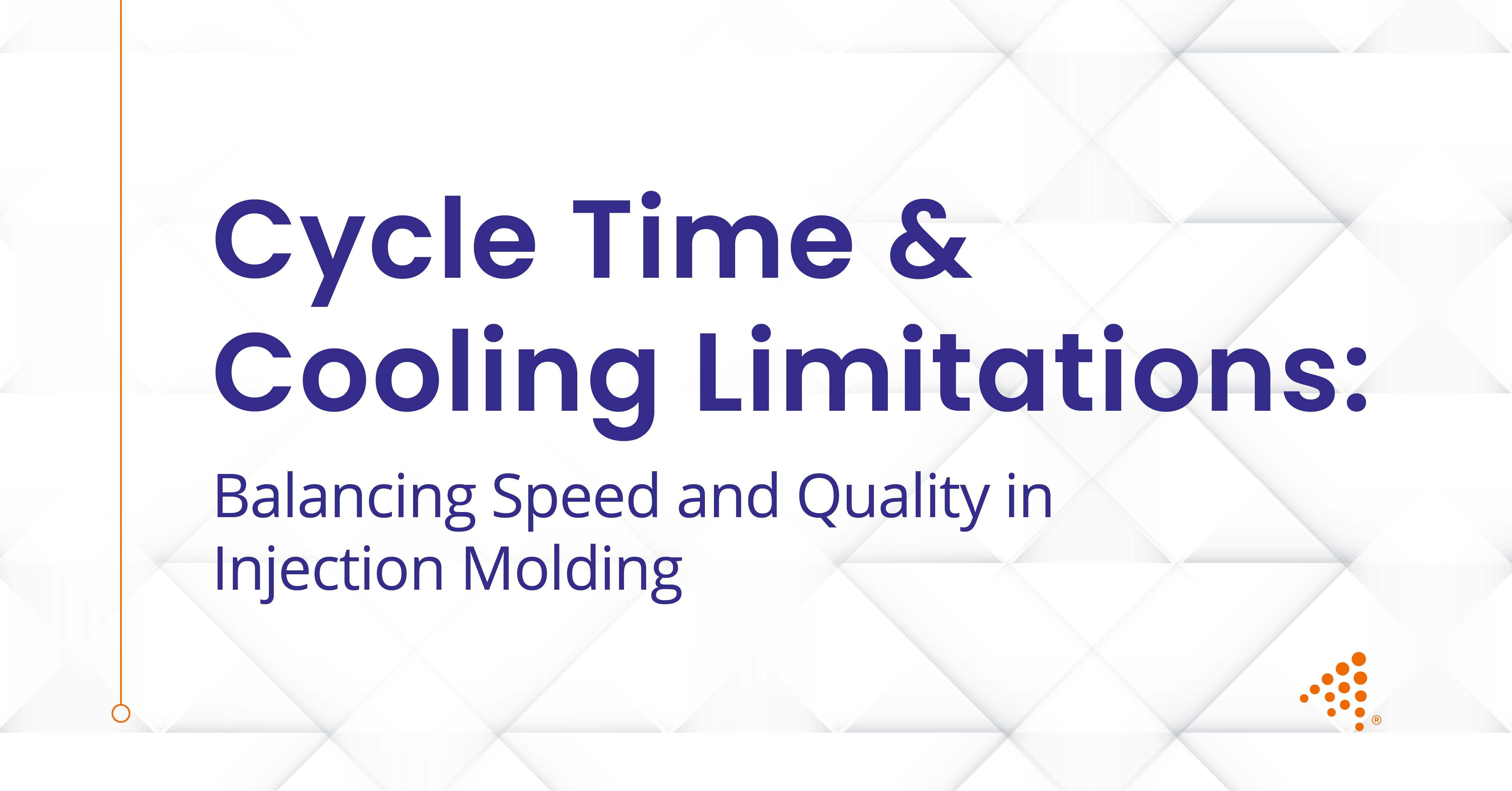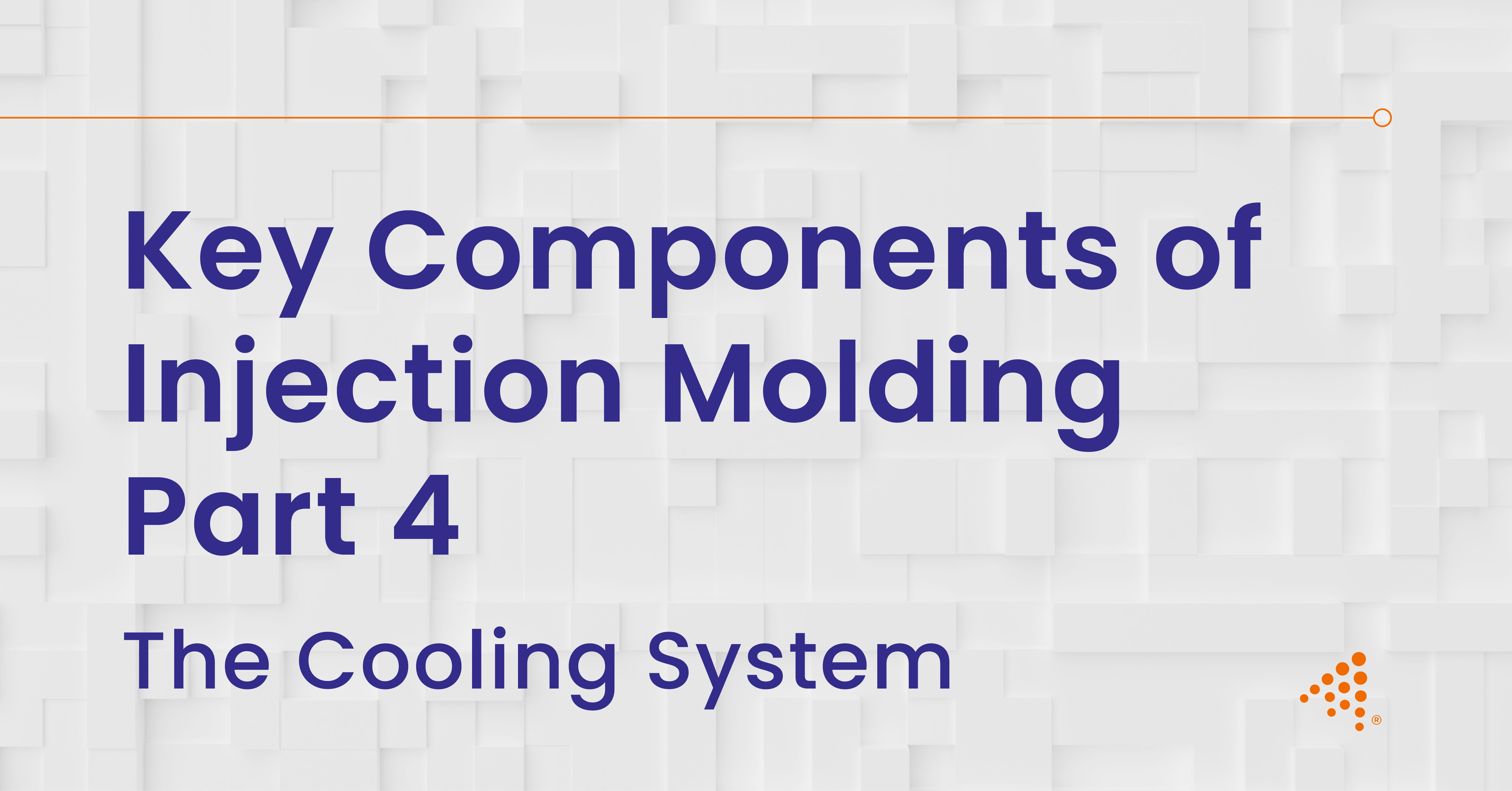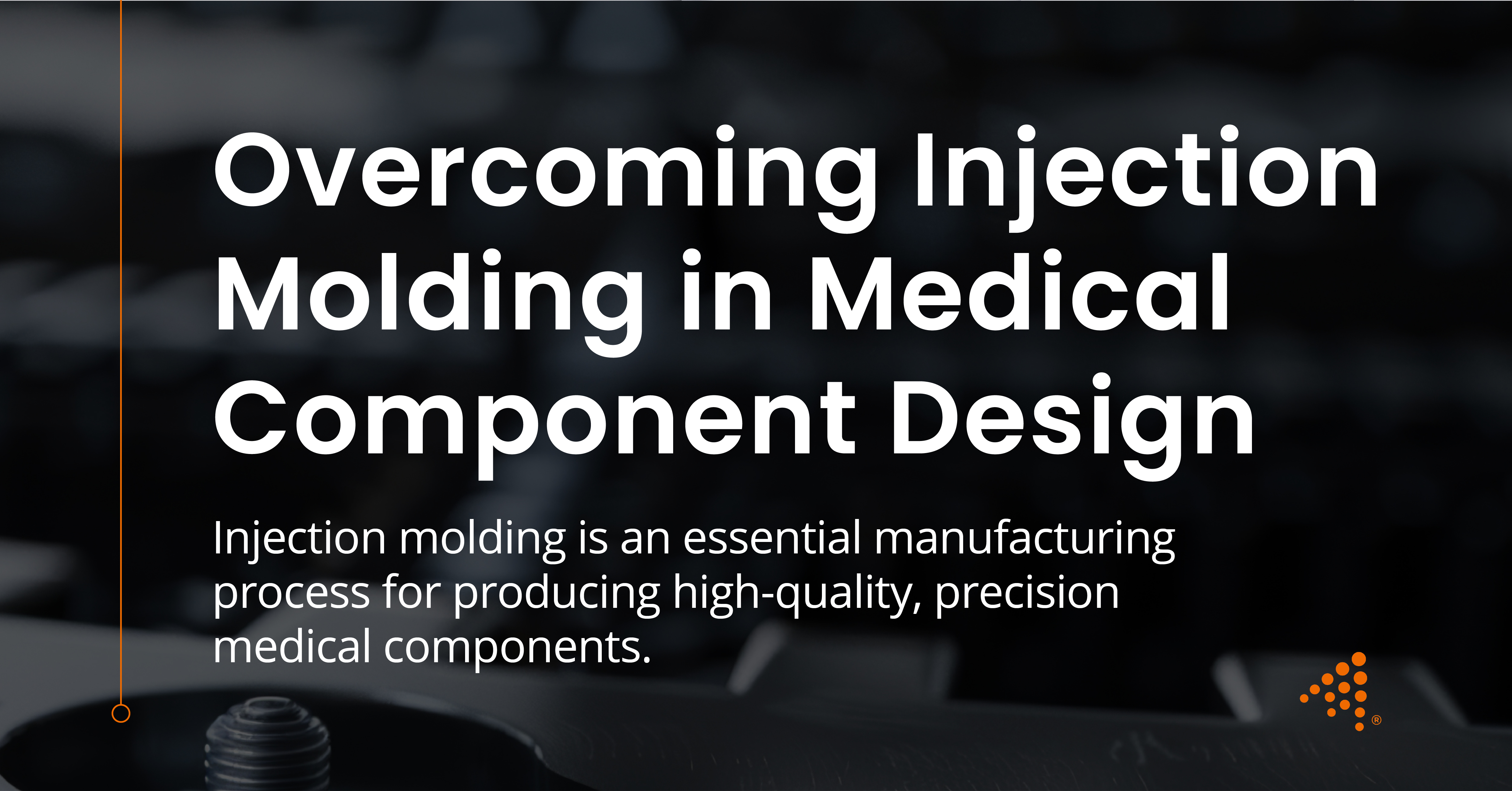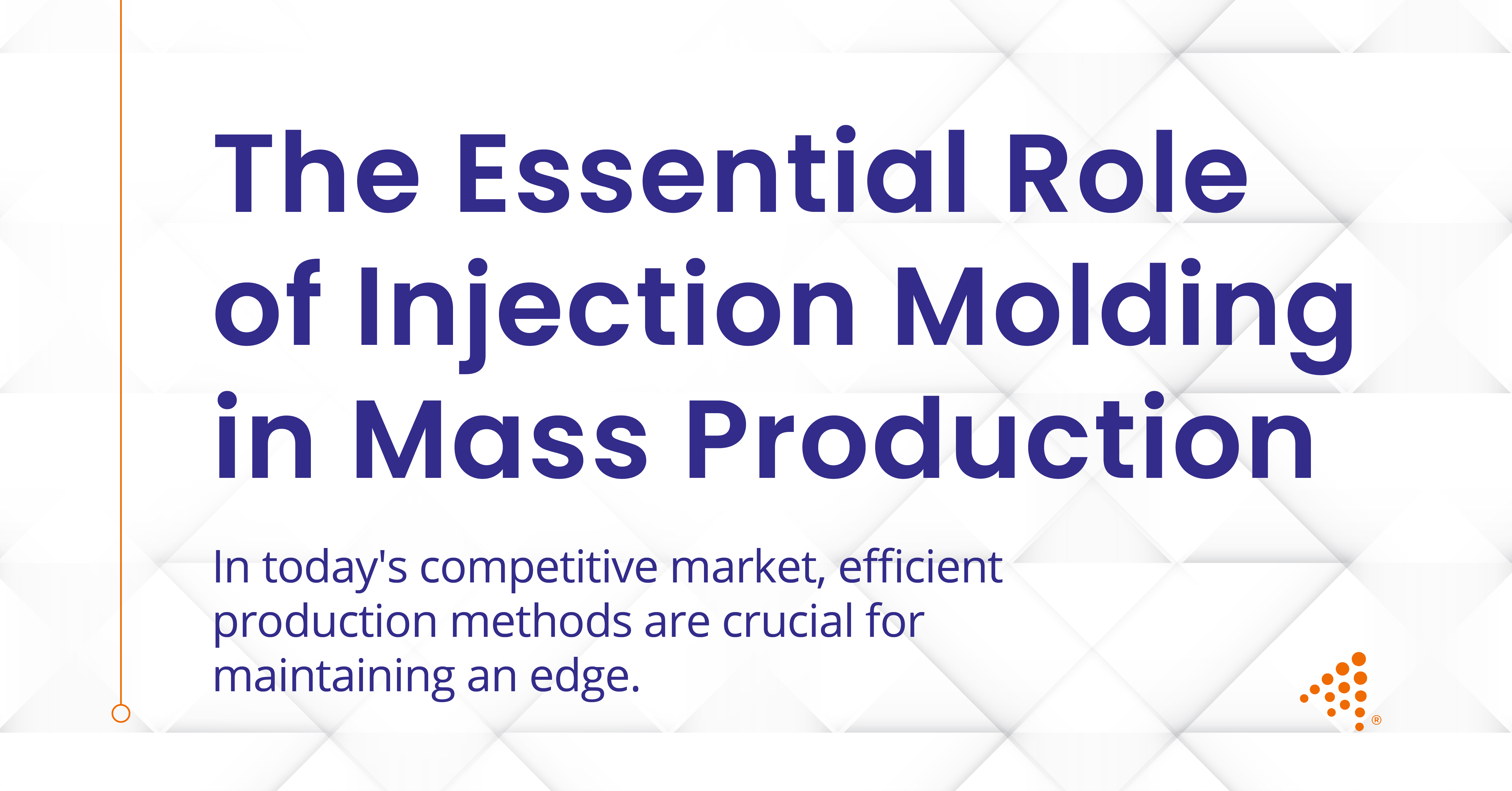4 min read
Key Components of Injection Molding Part 4: Cooling System
In the precision-driven world of injection molding, meticulous control over the mold's temperature is fundamental for achieving optimal cycle times...
5 min read
Nick Erickson : Jul 8, 2025 9:16:00 AM

In the intricate world of injection molding, the duration required to complete one full production cycle, known as cycle time, significantly influences overall manufacturing efficiency. A substantial portion of this cycle is dedicated to cooling, a phase that directly affects both the speed of production and the ultimate quality of the molded parts. Engineers and manufacturers must navigate a careful balance, optimizing cooling parameters to achieve high-quality components while maintaining swift cycle times. This discussion will delve into the impact of cooling on production speed, explore strategies for enhancing cooling efficiency, and examine how to achieve an optimal equilibrium between production velocity and part integrity, particularly for industries like medical device manufacturing.
Read More About Key Components of Injection Molding Part 3: The Mold/Tool
Cooling time can constitute a significant portion, often up to 70%, of the total cycle time in injection molding. This makes it a primary determinant of overall production speed. The period necessary for the molten material, once injected into the mold cavity, to cool and solidify dictates how quickly subsequent parts can be produced. Effectively managing this cooling phase is fundamental to shortening cycle times and thereby boosting production throughput.
One of the main challenges encountered during the cooling phase is non-uniform temperature reduction across the mold. If various sections of the molded part cool at different rates, several quality issues can arise. For instance, warpage can occur when one area of the part cools and contracts more rapidly than another, leading to distortion and a component that may not meet dimensional specifications. Similarly, uneven cooling can cause differential shrinkage, where some sections of the part shrink more than others, resulting in dimensional inaccuracies and potential assembly problems. This variability in cooling can also lead to inconsistent part quality, manifesting as differences in surface finish or mechanical properties from one part to another. Such inconsistencies can increase scrap rates and compromise the reliability of the final product. To mitigate these undesirable outcomes, the design of the mold's cooling system is paramount, aiming for even heat distribution. This involves strategic placement of cooling channels and sometimes incorporates the use of advanced cooling techniques and high-performance coolants.
Strike the right balance between speed and precision with expert guidance on cycle time and cooling strategies in injection molding.
Efficient heat removal during the cooling stage is vital not only for reducing cycle times but also for maintaining part consistency. Proper and uniform cooling helps the part solidify evenly, which is important for preventing defects such as warping, sink marks, or internal stresses that could otherwise compromise the structural integrity and performance of the component. Several techniques can be employed to optimize cooling:
By thoughtfully combining these techniques, manufacturers can maximize cooling efficiency, leading to shorter cycle times and improved part quality.
A primary objective in injection molding is to minimize cycle times to increase production throughput. However, this pursuit of speed must not be at the expense of part quality. Accelerating the cooling phase excessively can introduce internal stresses within the part, potentially leading to weaker components or visible defects like warping and sink marks. These internal stresses occur when the outer surface of the part cools and solidifies much faster than the internal core, creating a tension that can compromise the part's mechanical properties and long-term stability.
Conversely, extending cooling times can improve part strength and dimensional stability by allowing the material to solidify more uniformly and with less residual stress. However, this approach directly reduces production efficiency, as fewer parts are produced within a given timeframe. This trade-off is particularly pertinent in high-volume manufacturing scenarios where maximizing output is a key economic driver.
To achieve an optimal balance, engineers must meticulously fine-tune the cooling process. This iterative process may involve adjustments to the mold design, such as optimizing gate locations and wall thicknesses, modifying cooling channel layouts, or adjusting processing parameters like melt temperature, packing pressure, and, most importantly, coolant temperature and flow rate. The goal is to reduce the cooling portion of the cycle time as much as possible while still ensuring that the part solidifies sufficiently to maintain its shape and meet all specified mechanical and aesthetic requirements. Advanced cooling technologies, including conformal cooling and the use of highly conductive mold materials or coatings, can also facilitate faster cycle times without negatively impacting part quality, offering a pathway to bridge the gap between speed and quality.
Read More About Injection Molding Defects: Discoloration – Why It Happens and How to Avoid It
In sectors where precision and reliability are non-negotiable, such as in the manufacturing of medical devices or high-performance components for aerospace and automotive industries, optimizing the cooling process without compromising quality takes on heightened importance. In these fields, part defects can lead to serious consequences, including product failures, safety hazards, patient risks, or regulatory non-compliance, resulting in costly recalls and damage to reputation.
For medical device manufacturing, achieving uniform and consistent cooling is fundamental. Many medical components must meet stringent regulatory standards and performance criteria. This is especially true for parts subjected to sterilization processes, high mechanical stress, or those requiring exceptional dimensional accuracy, such as components for surgical instruments, drug delivery systems, or diagnostic equipment. Warping, shrinkage, or internal stresses can render these parts unusable. Therefore, cooling strategies must be meticulously designed and validated to maintain tight tolerances and ensure the biocompatibility and functionality of the final product. Cleanroom manufacturing environments, often required for medical devices, also necessitate careful consideration of mold cooling to prevent any contamination while achieving desired part properties.
Similarly, in high-performance manufacturing, for items like automotive engine components, aerospace interior parts, or precision electronic enclosures, the challenge lies in reducing cycle times while ensuring the mechanical strength and durability of the parts. Advanced cooling techniques, precise temperature control systems, and in-mold sensors are often employed. These technologies allow for real-time monitoring and adjustment of the cooling process, helping to produce parts that meet demanding strength and tolerance specifications without unnecessarily extending production times. The material selection also plays a role, as different engineering-grade plastics have varying thermal properties that will influence the optimal cooling strategy.
Avoid production delays and quality issues by optimizing your cooling phase and cycle time.
Cycle time and the associated cooling limitations are pivotal factors that engineers and manufacturers must skillfully manage to achieve the desired equilibrium between production speed and part quality. By implementing advanced strategies such as conformal cooling, carefully optimizing cooling channel placement, and utilizing high-performance coolant systems, it is possible to shorten cycle times, enhance cooling efficiency, and maintain consistent, high-quality output. Reaching this optimal balance demands a thorough understanding of part geometry, material thermal properties, mold design principles, and specific production objectives. Continuous process monitoring and refinement are key to sustained success in producing top-tier injection molded parts efficiently.
At Aprios, we specialize in optimizing injection molding processes to improve both speed and quality. If you’re looking to improve your cycle time, reduce cooling time variability, or achieve better part consistency, contact Aprios today to discuss how we can support your manufacturing needs.

4 min read
In the precision-driven world of injection molding, meticulous control over the mold's temperature is fundamental for achieving optimal cycle times...

Injection molding is an essential manufacturing process for producing high-quality, precision medical components where device reliability and patient...

In today's competitive market, efficient manufacturing methods are crucial for maintaining a commercial edge. Injection molding stands out as a vital...